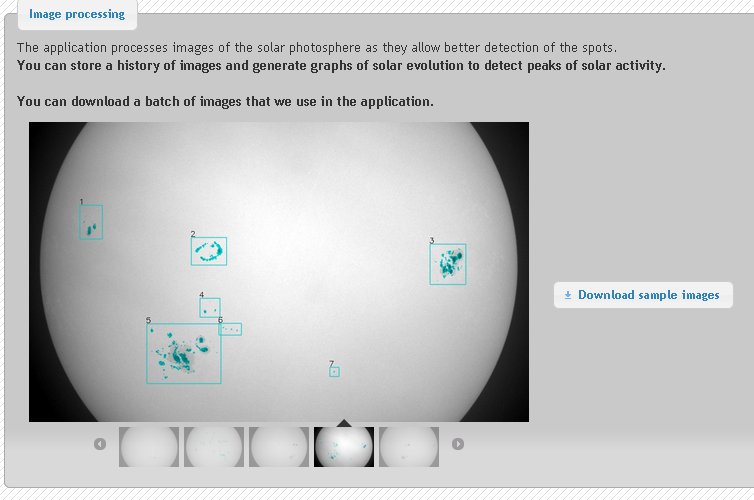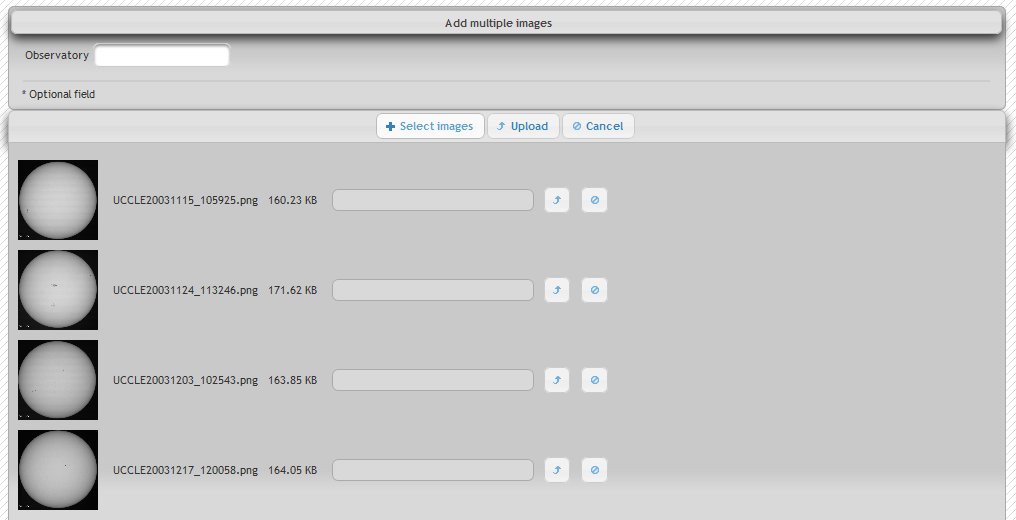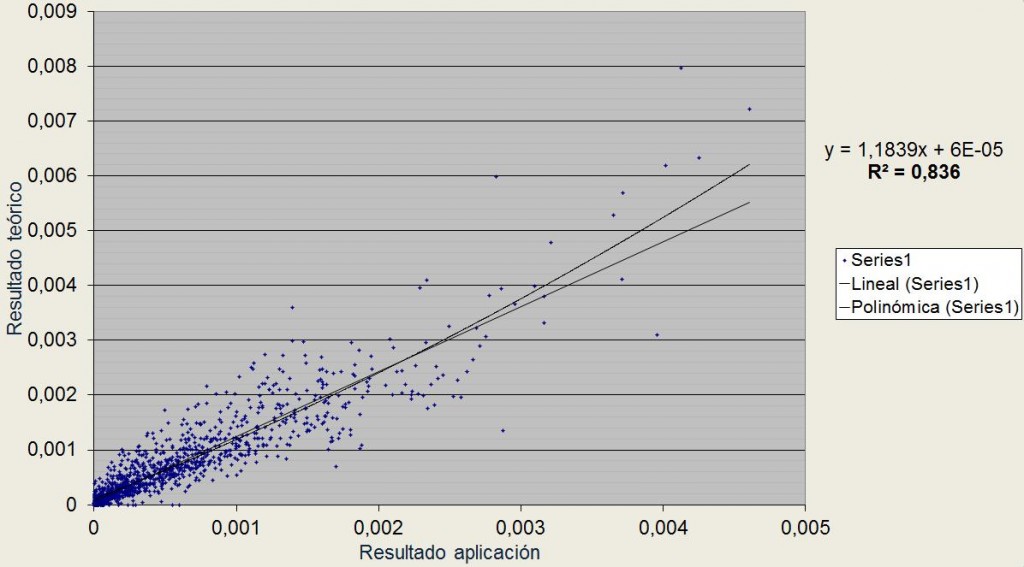“Sunpotweb” is a web application dedicated to the study of sunspots appearing on the solar surface. These spots are cold regions with a low temperature compared with the average temperature of the Sun and with high magnetic activity. The appearance of large patches is often linked to the phenomenon of solar storms, which can cause serious damage in the current communication technologies, energy resources, electronic devices, etc.
This work is based on a Master Final Work proposal by Victor Castiñeira in the Master of Computer Science at the Politecnic School of Cáceres (University of Extremadura). Currently, we have the application available in a beta version for users to test it and if it works correctly, if we find bugs, improvements, etc. All suggestions will be wellcome to the email:
We invite you to use our application via the following URL:
Information about the downloads of images:
Multiple images at the same time:
An example with several sunspots:
The project is based on previous works. The main goal was to improve the results offered by the application in the detection process of sunspots. We obtained a great improvement, with a linear relationship between the Catania’s Observatory and our application results of approximately 0’84.
Once obtained the improved results, the next step was to perform a migration of existing desktop application to a web application. The previous solution was made in two layers, combining Java and C++ for development:
- DLL Library: Made through C++ combined with OpenCV library for advanced processing images.
- User Interface: Made with Java Swing GUI components and communicated with DLL through JNI (Java Native Interface).
The new web application has been performed with a Java J2EE Arquitecture formed by different layers. You can see the sunspotweb’s arquitecture in the next graphic.
- Presentation Layer: Implements the User Interface with JSF 2.0 (Java Server Faces). JSF allows building high quality UI with advanced features like Ajax, internationalization, data validation, etc.
- Business logic Layer: Responsible for encapsulate business rules, permissions management, security, etc. Built with Spring framework integrating the previous DLL through JNI.
- Integration Layer: Integration of application data model with the database to achieve data persistence. Performed with the most famous Java ORM (Object-Relational mapping) Hibernate.
- Database: MySQL database to store the solar images and results of sunspots detection.
For more information. You can download the sunspotweb’s project documentation at the followings addresses.
Memory:
http://gim.unex.es/index.php?option=com_remository&Itemid=220&func=startdown&id=375&lang=en
Presentation:
http://gim.unex.es/index.php?option=com_remository&Itemid=220&func=startdown&id=377&lang=en






